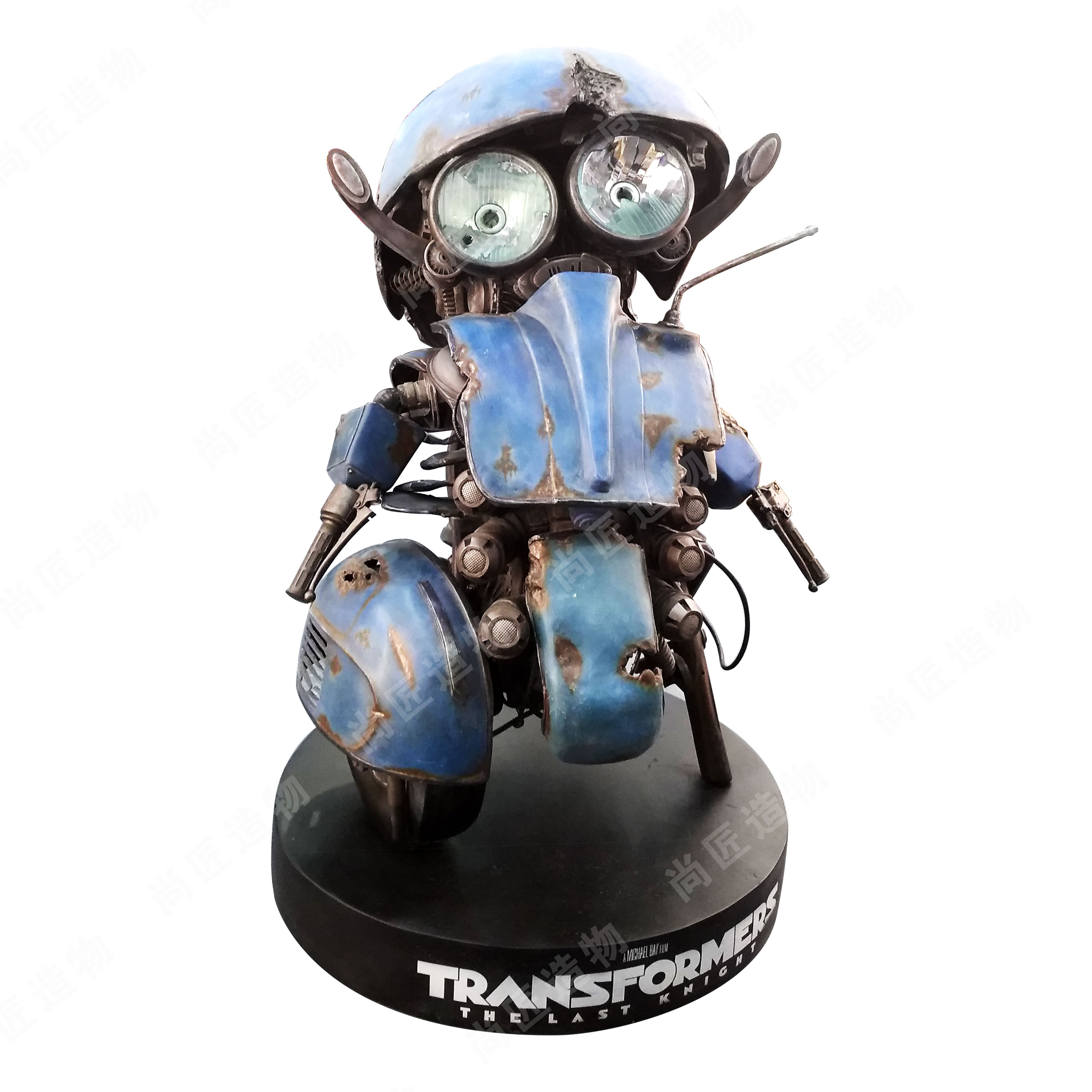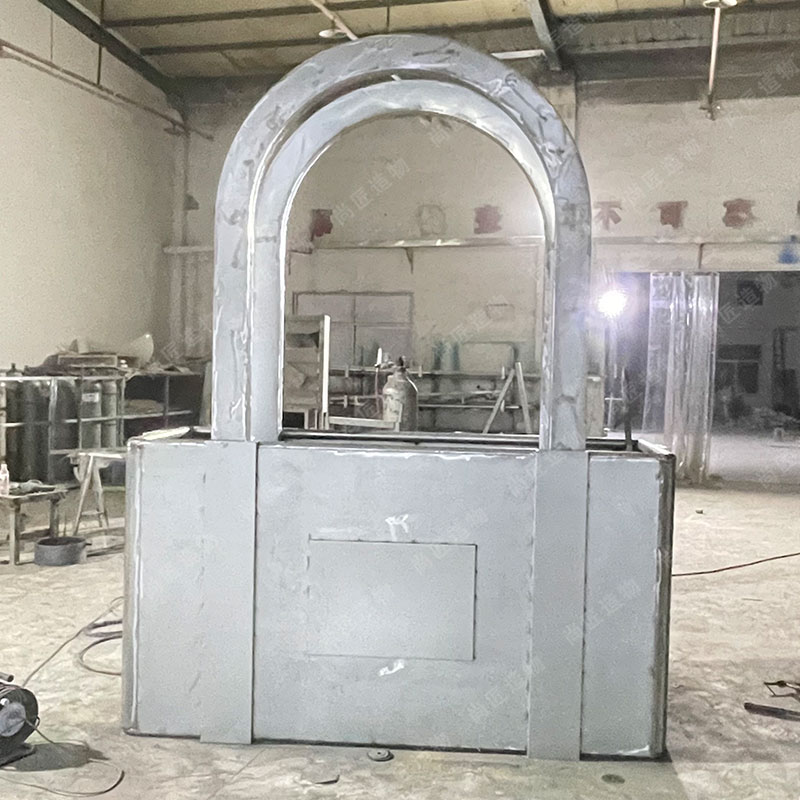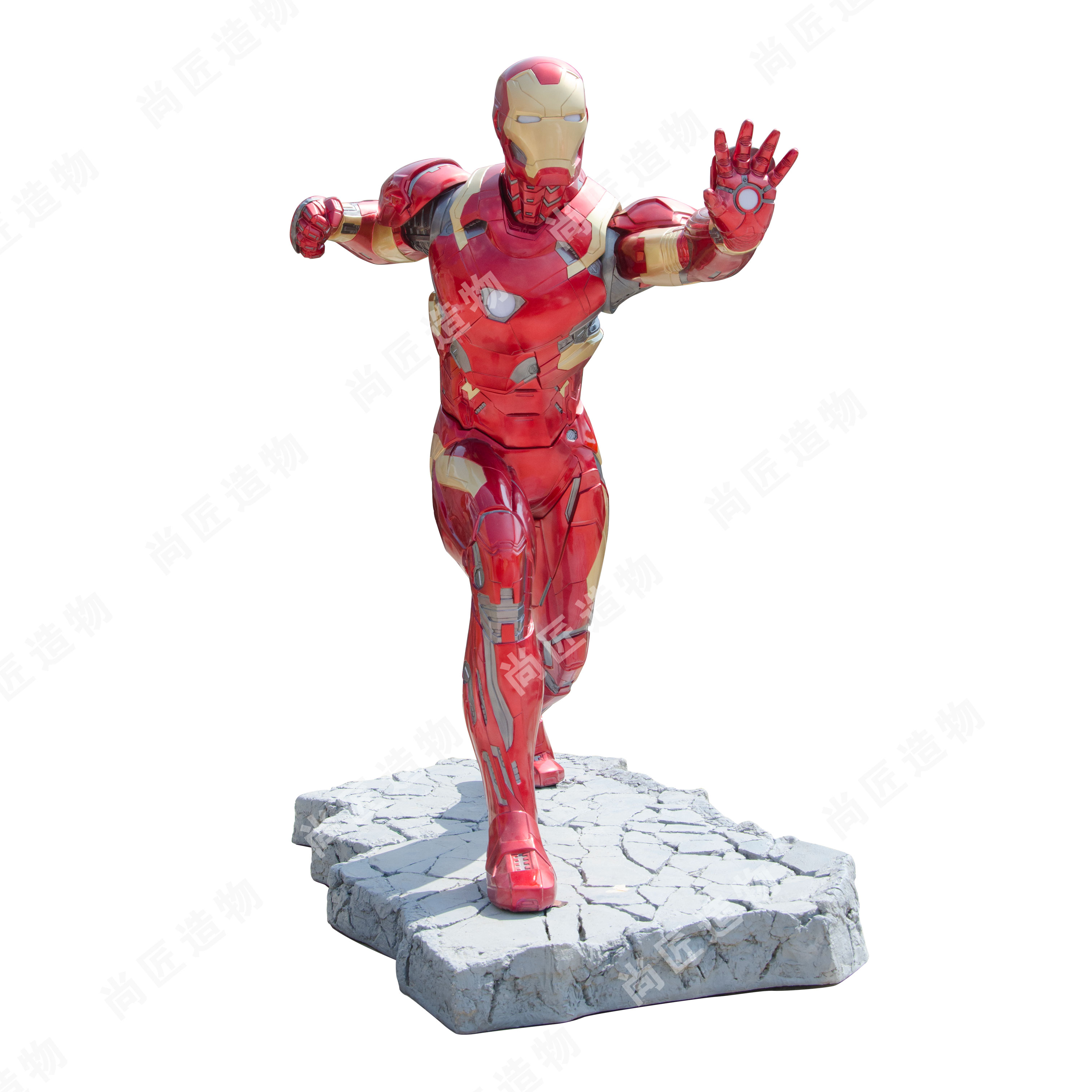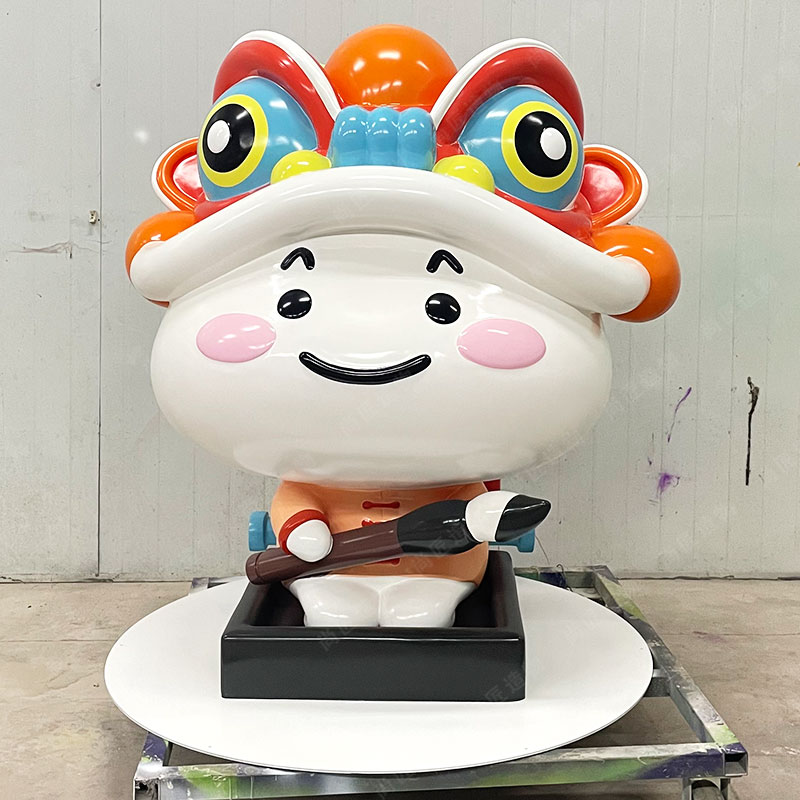Key Takeaways
Interactive kinetic art introduces dynamic elements to public spaces through motion-sensitive installations, creating environments where viewers become active participants. Cartoon sculptures—often oversized and brightly colored—serve as focal points, using sensors or mechanical systems to react to touch, sound, or movement. This fusion of technology and art transforms static urban areas into lively hubs, encouraging spontaneous interactions among passersby.
| Feature | Traditional Sculptures | Kinetic Cartoon Sculptures |
|---|---|---|
| Interaction | Passive observation | Touch/motion-responsive |
| Technology Integration | None | Sensors, motors, AI algorithms |
| Audience Engagement | Limited | High (multisensory experience) |
Urban planners increasingly adopt these installations to revitalize underused spaces, such as plazas or transit hubs. For example, rotating sculptures that mimic playful gestures when approached can turn a mundane walkway into a communal playground. The blend of whimsical design and responsive mechanics not only attracts diverse age groups but also fosters a sense of shared ownership over public areas. By merging play with advanced engineering, kinetic art redefines how communities interact with their surroundings.

Interactive Kinetic Art in Public Spaces
Public spaces worldwide are adopting interactive kinetic art to create environments where motion and audience participation merge. These installations often employ cartoon-inspired sculptures that react to environmental stimuli—wind, touch, or human movement—through embedded sensors or mechanical systems. For example, rotating figures might mimic a viewer’s gestures, while color-shifting surfaces respond to temperature changes. Such designs leverage durable materials like stainless steel sculpture frameworks, ensuring longevity while maintaining playful aesthetics.
"Kinetic art transforms static spaces into conversations between viewer and object," notes urban designer Mara Villette. "Cartoon elements lower barriers to engagement, making art accessible across age groups."
To maximize impact, artists balance whimsy with technical precision. Motion patterns are calibrated to avoid overwhelming audiences, and interactive zones are designed for safety. A practical tip for municipalities: pair kinetic installations with seating areas to encourage prolonged interaction, fostering community connection. By blending technology and humor, these works redefine how urban landscapes function—not just as transit routes, but as stages for spontaneous play.

Cartoon Sculptures Enhance Urban Engagement
Interactive kinetic sculptures featuring cartoon characters are redefining how communities interact with public art. By integrating motion sensors and responsive mechanisms, these installations invite passersby to activate whimsical movements—a dancing robot might spin when clapped at, or a giant animal figure could nod when approached. Such cartoon sculptures bridge the gap between static monuments and participatory experiences, turning sidewalks and parks into stages for spontaneous interaction.
Urban planners increasingly prioritize these playful designs to counteract the impersonal nature of cityscapes. For example, a kinetic sculpture resembling a bouncing cartoon balloon in a plaza might sway in response to wind or touch, creating a focal point that draws families and encourages social connection. The accessibility of cartoon aesthetics—recognizable shapes, bright colors, and exaggerated expressions—ensures engagement across age groups, making art feel less intimidating and more inclusive.
This approach not only revitalizes underused spaces but also fosters civic pride. When sculptures react to human presence, they transform viewers into co-creators of the urban narrative. By merging tactile technology with lighthearted imagery, cities cultivate environments where art becomes a shared language rather than a passive backdrop.
Tech-Driven Motion in Artistic Installations
Modern interactive kinetic sculptures rely on advanced technology to create responsive movement in public spaces. Sensors, motors, and microcontrollers work in tandem to detect human presence or motion, triggering dynamic shifts in cartoon-inspired sculptures. For example, a whimsical owl sculpture might swivel its head when someone approaches, while a robotic flower opens its petals as viewers clap. These systems often incorporate durable materials like weather-resistant metals or polymers, ensuring functionality in outdoor environments.
The integration of Realistic sculpture techniques with kinetic elements adds depth to cartoon designs, balancing playful aesthetics with mechanical precision. Solar panels or low-energy Bluetooth systems are increasingly used to power installations sustainably. This blend of innovation and artistry not only captivates audiences but also encourages prolonged interaction, turning static plazas into evolving narratives. By merging engineering with imaginative forms, these installations redefine how technology can enhance shared experiences in urban settings.

Transforming Cities with Kinetic Sculptures
Kinetic sculptures are redefining urban landscapes by introducing motion and interactivity to traditionally static public spaces. These installations, often crafted from durable materials like fiberglass sculpture, incorporate sensors or mechanical systems that activate when touched or approached. By integrating playful cartoon-inspired designs, they create accessible points of engagement for diverse audiences, from children to adults. For example, a spinning sculpture resembling a giant flower might unfold its petals in response to footsteps, while a whimsical animal figure could sway rhythmically as crowds gather nearby.
This combination of art and technology encourages spontaneous interactions, turning plazas, parks, and transit hubs into lively destinations. Cities adopting such installations often see increased foot traffic and prolonged visitor停留时间, as kinetic art fosters curiosity and shared experiences. Beyond aesthetics, these sculptures serve functional roles—softening the rigidity of urban architecture or guiding pedestrian flow through rhythmic movements. Their adaptability allows them to evolve with community needs, ensuring public spaces remain relevant and inviting.
Whimsical Designs for Interactive Playgrounds
Public spaces gain new life through interactive kinetic sculptures that prioritize playful aesthetics and unexpected motion. These installations often feature exaggerated, cartoon-inspired forms—oversized bouncing animals, spinning geometric flowers, or swaying abstract characters—to spark curiosity across age groups. By combining durable, weather-resistant materials like powder-coated steel or recycled polymers with motion sensors or pressure-sensitive panels, the sculptures invite tactile exploration while maintaining structural integrity. For example, a kinetic sculpture resembling a giant wobbling mushroom might light up when touched, triggering gentle rotations that mirror natural growth patterns.
Designers balance whimsy with functionality, embedding discreet solar panels or kinetic energy harvesters to power low-voltage LED systems. This approach ensures installations remain energy-efficient without compromising their fantastical appeal. Curved edges, bold color gradients, and asymmetrical shapes create visual contrast against rigid urban landscapes, softening environments while encouraging spontaneous interaction. Such designs not only redefine playground norms but also foster inclusive engagement, inviting passersby to reinterpret public spaces as zones of collective imagination.
Dynamic Art Merging Play and Technology
By integrating motion-sensitive technology with playful aesthetics, interactive kinetic sculptures redefine how audiences engage with public art. These installations often employ lightweight materials like weather-resistant polymers or aluminum alloys, allowing cartoon-inspired figures to sway, spin, or light up in response to human interaction. For instance, a IP character sculpture might tilt its head when sensors detect nearby movement, creating a whimsical dialogue between viewer and artwork. Such designs leverage microcontrollers and pressure-sensitive actuators to translate physical input into fluid motion, blending engineering precision with artistic expression.
This fusion of play and technology encourages spontaneous participation, turning static plazas into hubs of collective creativity. Children might trigger cascading light patterns by jumping on embedded pads, while adults interact through gesture-controlled interfaces. The result is an evolving urban landscape where art transcends visual observation, becoming a tactile, shared experience that bridges generational divides.

Community Impact of Moving Cartoon Art
Interactive kinetic sculptures featuring cartoon designs do more than entertain—they reshape how communities interact with public spaces. By inviting physical engagement, these installations break down barriers between art and everyday life. Children instinctively approach the playful forms, while adults often rediscover curiosity through motion-activated responses. This shared experience fosters spontaneous conversations among strangers, turning parks or plazas into social hubs.
Cities that adopt such installations frequently report increased foot traffic in previously underused areas. The sculptures’ whimsical nature creates a sense of local identity, with communities often naming or adopting specific pieces as neighborhood mascots. Accessibility plays a key role, as kinetic art requires no cultural or linguistic background to enjoy—making it universally welcoming. Over time, these dynamic artworks can strengthen communal bonds by providing neutral ground for diverse groups to connect through shared wonder. Their durability as public assets also encourages long-term stewardship, as residents take pride in maintaining spaces that spark daily joy.
Reimagining Public Spaces Through Kinetic Play
By integrating interactive kinetic sculptures into urban environments, cities can transform static plazas and parks into lively hubs of engagement. These installations, often featuring cartoon-inspired designs, use motion sensors or touch-activated mechanisms to respond to passersby. A spinning abstract figure might rotate faster as children gather around it, while a whimsical animal sculpture could light up or emit playful sounds when approached. This blend of art and technology encourages spontaneous interaction, turning ordinary sidewalks into spaces where creativity and movement intersect.
Such installations prioritize durability and accessibility, using materials like lightweight metals or weather-resistant polymers to withstand public use. Beyond aesthetics, they serve functional roles—guiding foot traffic through rhythmic motions or creating shaded areas with rotating panels. Urban planners increasingly recognize kinetic art’s potential to soften rigid cityscapes, fostering community connections through shared experiences. As these sculptures shift and adapt, they mirror the dynamic energy of modern urban life, proving that public art can be both visually striking and inherently participatory.
Conclusion
As cities continue to evolve, interactive kinetic art with cartoon sculptures offers a bridge between functional public spaces and imaginative experiences. By integrating motion-responsive technology with playful aesthetics, these installations redefine how communities interact with their surroundings. While their whimsical designs captivate viewers, the underlying innovation—sensors, actuators, and adaptive programming—ensures seamless engagement. Urban areas transformed by such art become more than transit zones; they evolve into hubs where spontaneity and technology coexist. This fusion not only revitalizes underused spaces but also fosters social connections, inviting people of all ages to pause and participate. Looking ahead, the potential for kinetic sculptures to adapt to new technologies—such as AI or augmented reality—promises even deeper layers of interaction, ensuring public art remains both relevant and revolutionary.
FAQs
How do interactive kinetic sculptures detect movement?
Most installations use motion sensors, pressure plates, or cameras to trigger responses. These systems activate motors or lights when viewers approach or interact with the sculpture.
Are cartoon-themed sculptures durable for outdoor use?
Materials like weather-resistant metals, reinforced polymers, and UV-stable paints ensure longevity. Regular maintenance checks help preserve moving parts and surfaces.
Can children safely engage with these installations?
Designs prioritize rounded edges, non-toxic finishes, and controlled motion ranges. Sensors often include safety cutoffs to prevent abrupt movements near users.
Do these sculptures require constant power sources?
Many use solar panels or kinetic energy converters for sustainability. Battery backups and low-energy LED lights reduce reliance on external power grids.
How do kinetic sculptures impact community spaces?
They encourage social interaction by creating shared focal points. Playful designs lower barriers to art appreciation, fostering inclusivity in diverse neighborhoods.
What maintenance challenges arise with moving parts?
Lubrication of joints, sensor recalibration, and wear-resistant materials mitigate issues. Some systems feature self-diagnostic software to alert technicians about malfunctions.
 ch
ch English
English






